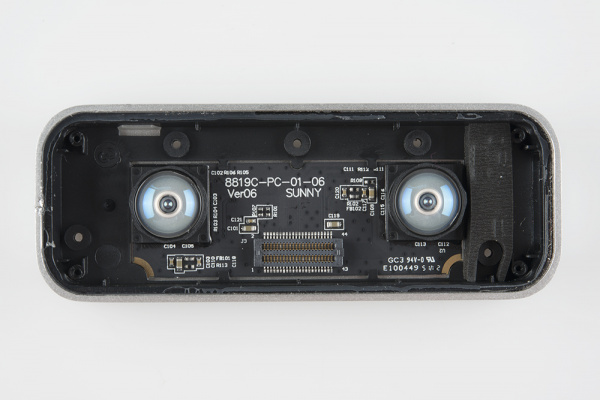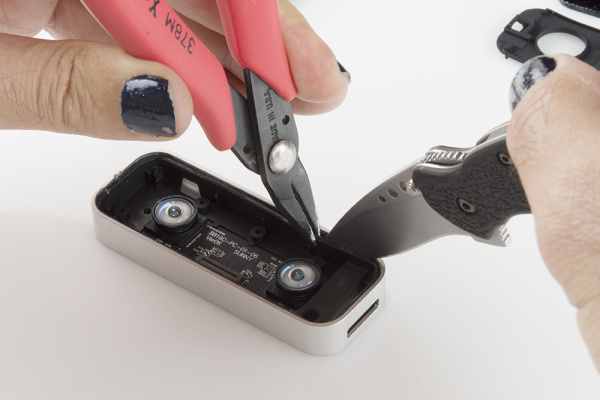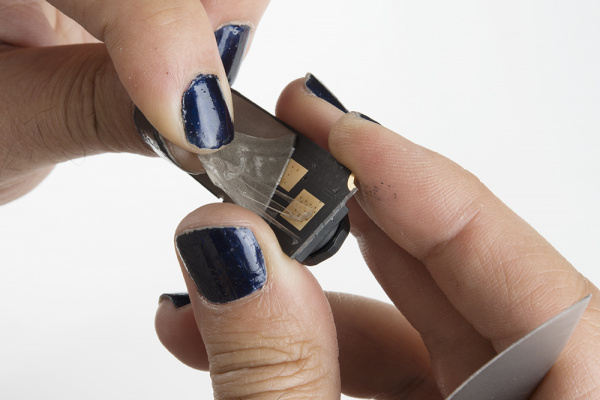Leap Motion Teardown
The Seedless Underbelly
We're down to the end, now--just the one PCB left, nestled down inside a plastic cradle. The lenses over the detectors give the thing an owlish appearance; I didn't try to peel off the optics because I didn't want to permanently damage it, and getting dust between the lens, the aperture and the detector seemed like a bad idea. I also knew that, short of unsoldering the detectors (and even then), I wasn't likely to gain any insight into them other than what I can tell from this view: they're CMOS, not CCD, and that's hardly surprising. The all-in-one functionality of CMOS imagers versus the complexity of CCD imagers support circuitry means that a CCD-based solution would be almost impossible to fit into this footprint.
As to why there are two detectors, it would appear that stereoscopic imaging is very important to this application. Cover up one of the sensors but not the other and the Leap completely fails.
I gave extracting the cradle a try, but it didn't come easily--probably glued in. If you'll remember back to first post-peeling screws I discovered--the ones coming up from the bottom--you can now see what they were holding down. Odd that they felt like screws and glue were needed, but that's in keeping with the quality assembly elsewhere in the design.
Once I managed to get the PCB out, you can see that there's not much else going on in there. The cradle and the soft-rubber spacer seem to be pretty standard--they don't appear to be conductive material or anything fancy like that. The board itself has the bare-copper corners we saw on the top board, even though there were no screws holding those corners down.
The back of the bottom PCB has a few bare copper pads visible through a conductive metal fabric. It would appear that the adhesive holding it on is either conductive or not designed not to be, so the pads and fabric probably allow for heatsinking to the case.



